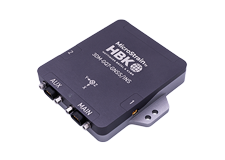Publication:
- ECN
Grabbing "free" energy involves more engineering than buying an off-the-shelf transducer.
Contrary to what you might think, the awareness of "green power" didn't spawn the drive to harvest energy. Low-power electronic fabrication technologies did the trick. They cut the power needs of small monitoring devices to the point where energy harvesting has started to make engineering and economic sense
When engineers start to think about using energy-harvesting techniques to power a device, they must consider the power path. "You have an energy-harvesting device followed by an energy-conversion device, an energy-storage component, and ultra-low-power energy-management circuitry," said Steve Grady, vice president of marketing at Cymbet. "Although there is a lot of talk about 'battery-less' devices, energy-harvesting-based systems still need something to store energy for times when the energy transducer is inactive." ....
MicroStrain also produces piezo-electric energy-harvesting devices for use in helicopters. "We're now involved with flight tests on MH-60S Navy Sea Hawk and UH-60A Army Black Hawk helicopters and V-22 Osprey tilt-rotor aircraft," said company President, Steve Arms. "Our harvesters convert the operational strains and vibrations of a helicopter into power that lets us monitor loads on rotating components. And we transmit the loads' information in real time."
"You might be surprised at the energy available in a device where you didn't think it existed, particularly at higher frequencies," noted Arms. In helicopter gearboxes, for example, we see a small displacement but because it shakes at such high frequencies, we can get a lot of energy. Even though the gearbox doesn't feel like it moves much, it is a rich environment for energy harvesting."
MicroStrain makes a product that can help engineers explore energy harvesting. The EH-Link Energy Harvesting Wireless Node lets people use piezo-electric, inductive, electromagnetic-field, solar, thermoelectric and other harvesting devices as power sources. The module includes an embedded triaxial accelerometer, relative-humidity and temperature sensor, and a single-channel differential input for an external sensor. Communications use a standard IEEE 802.15.4 transceiver. ....
To read the full version of the article, click here.










